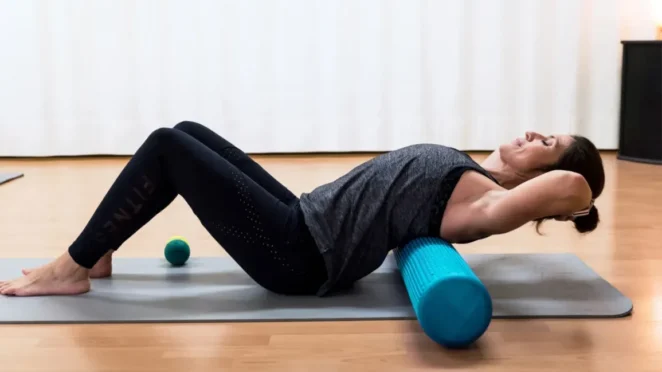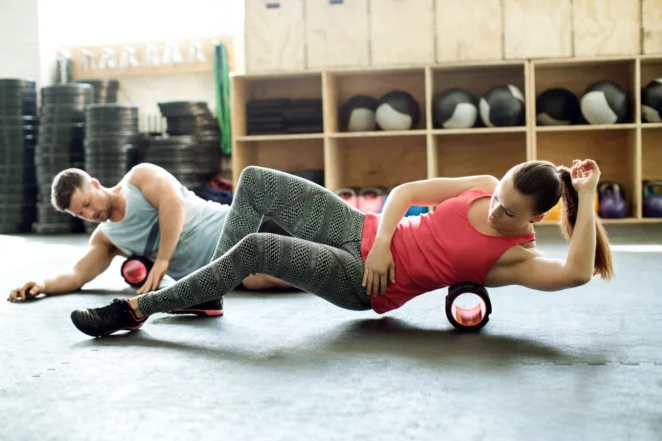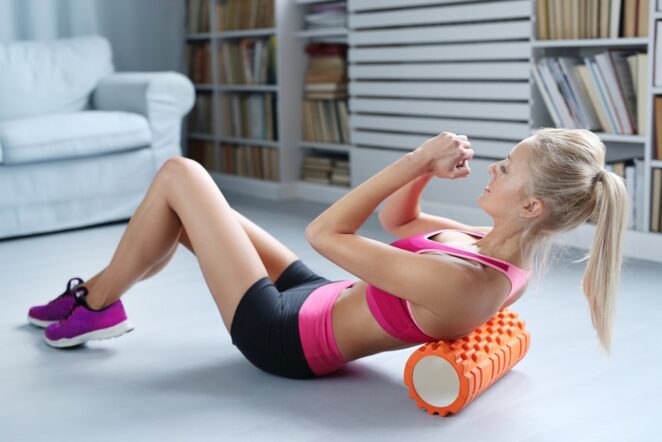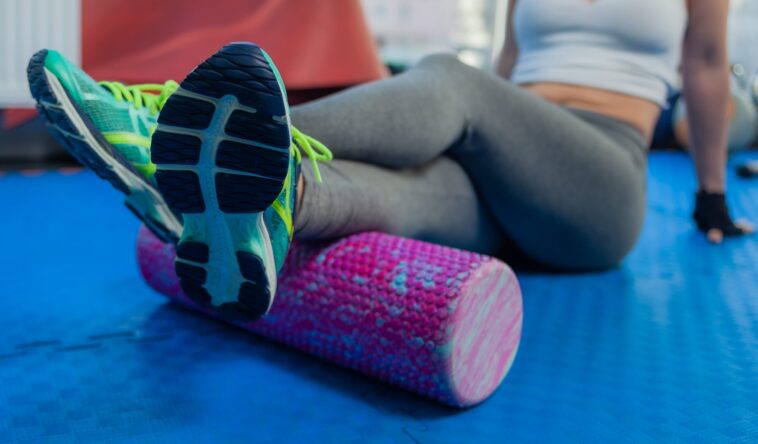Starting a new exercise regime or exercising for more hours can be pretty stressful for the body. The muscles that are made to work extra hard during a bout of exercise react to the stress and this results in soreness and inflammation.
Many people swear by foam rollers as a pre-exercise workout strategy to delay the onset of soreness and pain associated with vigorous exercise. A foam roller is usually cylindrical in shape and is made up of foam, but at times rubber may be used in addition to foam. A foam roller is usually six to ten inches in length. So if you are suffering from soreness, stiffness, and inflammation, it is time to order foam rollers for yourself.
Why Foam Rollers Are So Helpful In Relieving Pain And Inflammation
They Activate The Parasympathetic Nervous System

The body experiences pain and soreness after a round of intense exercise because tiny muscle fibers get broken due to the stress associated with a physical workout. The body experiences pain because there are nerve endings in the body that act as pain receptors, and they get activated when the body is somehow injured.
When you use foam rollers, then that relaxes the muscles locally. This relaxation stimulates the parasympathetic nervous system of the body. The body has two types of nerve responses based on the external inputs that it receives. The sympathetic nervous system excites the body, whereas the parasympathetic system relaxes it.
So when the body gets a relaxing environment externally, the parasympathetic nervous system gets activated, and the muscles relax, reducing stiffness and soreness.
They Improve The Flow Of Blood
Foam rollers improve the flow of blood to the affected tissues. One of the primary reasons for the soreness of muscles is the buildup of lactic acid. Under normal conditions, the cells of the body get an adequate supply of oxygen, and there is no buildup of lactic acid. But when a person undertakes vigorous exercise, then his body cells suffer a deficit of oxygen.
Under such circumstances, the body produces lactic acid, which is a by-product of respiration that takes place in the absence of oxygen. One of the easiest ways to break down the buildup of lactic acid is to expose the hypoxic (deprived of oxygen) tissue to blood that is rich in oxygen.
Foam rollers increase the blood supply in a localized area. Blood is the main carrier of metabolites produced in the body. So higher the blood supply, the faster the clearing of by-products like lactic acid and supply of oxygen.
They Prepare The Body For Exercise

If the body has not exercised for a long time, then the muscles suffer more strain when a person starts exercising suddenly. A pre-exercise session of foam rolling helps warms up the body for a vigorous physical workout. In a way, the foam rollers acclimatize the muscles of the body for physical workouts.
They Activate Anti-Inflammatory Proteins
Strenuous physical exercise causes inflammation because the immune cells of the body react to strain in the muscles. The inflammation happens because the immune cells of the body, like white blood cells, rush to the area of tissue damage to repair the damage. However, the persistence of inflammation is not good for the body, and foam rolling has been shown to activate anti-inflammatory proteins in the body.
They Help Regulate Irregular Muscle Adhesion
When the muscles begin to repair after a session of intense workout, then there might be situations where there is faulty adhesion between the newly formed muscle fibers.
Most people do not move their bodies if there is soreness and pain. However, this inactivity, followed by a period of intense activity, can be harmful. It might induce the newly produced collagen (connecting material of muscles) in the body to cause faulty adhesion of muscles. So a session of foam rolling after a session of physical workout helps prevent faulty adhesion in the muscles.
They Improve Flexibility And Thus Reduce Pain Post-Workout
Workout sessions strain many muscles in the body that do not see much usage in everyday activities. A pre-exercise foam rolling session helps remove muscle knots. So if muscle knots and stiffness is removed, it improves the range of movement and flexibility. If the relatively inactive muscles become more flexible and relaxed, then they will not be under a lot of strain during the exercise session, and this will make sure that post-workout injury is reduced to a minimum.
Another way in which rolling faom reduces stiffness is by working on the fascia. The fascia is the thin casing that holds the muscle fibers together. When the muscle expands and contracts, the fascia moves along with it. However, if the muscle is stiff and knotty, the fascia will also be tight, and rollers help improve the flexibility of the fascia as well.
How To Use A Foam Roller Properly To Get Maximum Benefit

Foam rollers can be very useful in reducing soreness and inflammation, but it is vital to use them properly. So here are a few tips for using them correctly.
Get the right density roller; low to medium density works best for beginners. It is also important to use the right shape of rollers, so the round ones work best for large muscles like calves, while peanut-shaped rollers are great for the spinal cord.
It is essential to understand that foam rolling might cause some discomfort initially, but that is how the process works. And finally, foam rolling should be avoided during severe injuries. They work for regular soreness, but for serious injuries, the injured portions need medical intervention and not foam rolling.
Conclusion
Most people do not use foam rolling because they do not understand the benefits associated with it. There is also some confusion about the effectiveness of foam rolling and whether it works best as a warm-up for exercise or whether it is great for a post-workout relief measure. Foam rollers work well for warm-up sessions and for post-workout tissue repair as well. But most users suggest that it works best as a warm-up technique.




